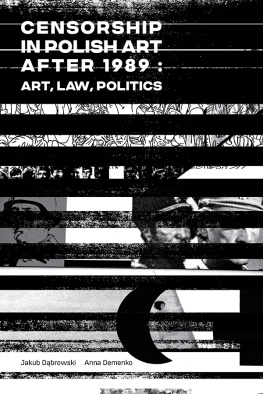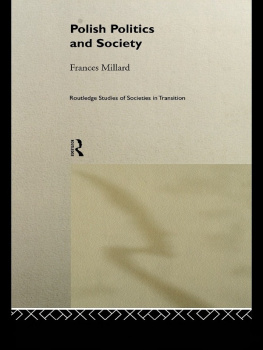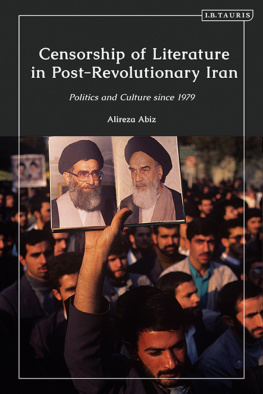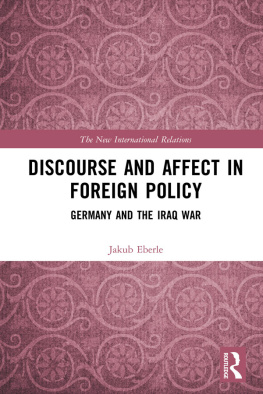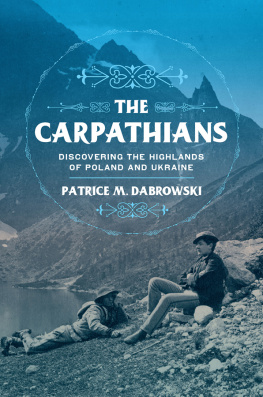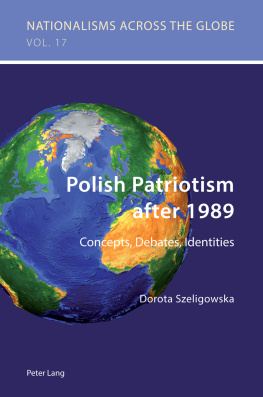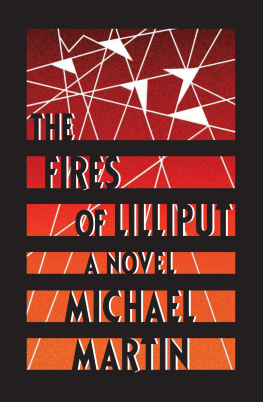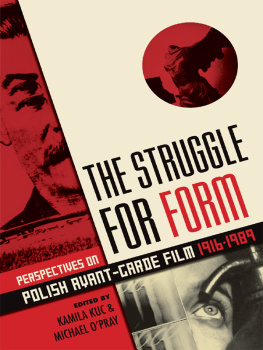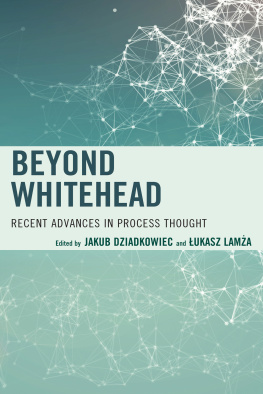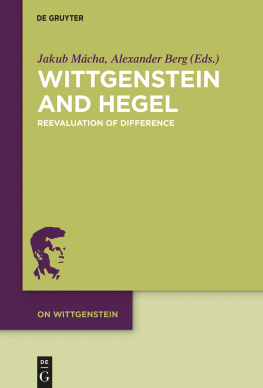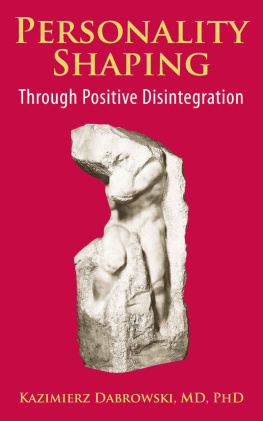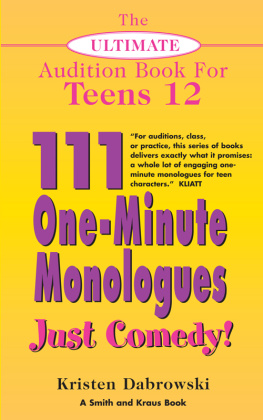Jakub Dąbrowski - Censorship in Polish art after 1989: Art, Law, Politics
Here you can read online Jakub Dąbrowski - Censorship in Polish art after 1989: Art, Law, Politics full text of the book (entire story) in english for free. Download pdf and epub, get meaning, cover and reviews about this ebook. year: 2019, publisher: Mosaic Press, genre: Art. Description of the work, (preface) as well as reviews are available. Best literature library LitArk.com created for fans of good reading and offers a wide selection of genres:
Romance novel
Science fiction
Adventure
Detective
Science
History
Home and family
Prose
Art
Politics
Computer
Non-fiction
Religion
Business
Children
Humor
Choose a favorite category and find really read worthwhile books. Enjoy immersion in the world of imagination, feel the emotions of the characters or learn something new for yourself, make an fascinating discovery.
- Book:Censorship in Polish art after 1989: Art, Law, Politics
- Author:
- Publisher:Mosaic Press
- Genre:
- Year:2019
- Rating:4 / 5
- Favourites:Add to favourites
- Your mark:
- 80
- 1
- 2
- 3
- 4
- 5
Censorship in Polish art after 1989: Art, Law, Politics: summary, description and annotation
We offer to read an annotation, description, summary or preface (depends on what the author of the book "Censorship in Polish art after 1989: Art, Law, Politics" wrote himself). If you haven't found the necessary information about the book — write in the comments, we will try to find it.
Censorship in Polish art after 1989: Art, Law, Politics — read online for free the complete book (whole text) full work
Below is the text of the book, divided by pages. System saving the place of the last page read, allows you to conveniently read the book "Censorship in Polish art after 1989: Art, Law, Politics" online for free, without having to search again every time where you left off. Put a bookmark, and you can go to the page where you finished reading at any time.
Font size:
Interval:
Bookmark:
CENSORSHIP
IN POLISH ART
AFTER 1989
CENSORSHIP
IN POLISH ART
AFTER 1989 :
Art, Law, Politics
JAKUB DBROWSKI &
ANNA DEMENKO
Translation by ukasz Mojsak and Aleksandra Sobczak

Library and Archives Canada Cataloguing in Publication
Title: Censorship in Polish art after 1989 : art, law, politics / Jakub Dbrowski, Anna Demenko ; ukasz Mojsak, Aleksandra Sobczak, translators.
Other titles: Cenzura w sztuce polskiej po 1989 roku. English
Names: Dbrowski, Jakub, 1977- author. | Demenko, Anna, author. | Mojsak, ukasz, translator. | Sobczak, Aleksandra, translator.
Description: Translation of: Cenzura w sztuce polskiej po 1989 roku. | Original Polish published in two volumes. English translation is one volume. | Includes bibliographical references and index.
Identifiers: Canadiana (print) 20190057106 | Canadiana (ebook) 2019005719X | ISBN 9781771614641 (softcover) | ISBN 9781771614658 (HTML) | ISBN 9781771614665 (Kindle)
Subjects: LCSH: ArtsCensorshipPolandHistory20th century. | LCSH: ArtsCensorshipPolandHistory 21st century. | LCSH: Art, Polish20th century. | LCSH: Art, Polish21st century. | LCSH: CensorshipPolandHistory20th century. | LCSH: CensorshipPolandHistory21st century.
Classification: LCC NX180.C44 D3313 2019 | DDC 700.1/03dc23
No part of this book may be reproduced or transmitted in any form, by any means, electronic or mechanical, including photocopying and recording, information storage and retrieval systems, without permission in writing from the publisher, except by a review who may quote brief passage in a review.
Published by Mosaic Press, Oakville, Ontario, Canada, 2019.
MOSAIC PRESS, Publishers
Copyright Jakub Dbrowski, Anna Demenko and Fundacja Kultura Miejsca, 2014
Translation Copyright Academy of Fine Arts in Warsaw (Akademia Sztuk Piknych w Warszawie), 2019

We acknowledge the Ontario Arts Council
for their support of our publishing program

MOSAIC PRESS
1252 Speers Road, Units 1 & 2
Oakville, Ontario L6L 5N9
phone: (905) 825-2130
The publication of this book was funded with the generous support of the Polish Ministry of Science and Higher Education National Programme for the Development of Humanities for the program years 2016 - 2018
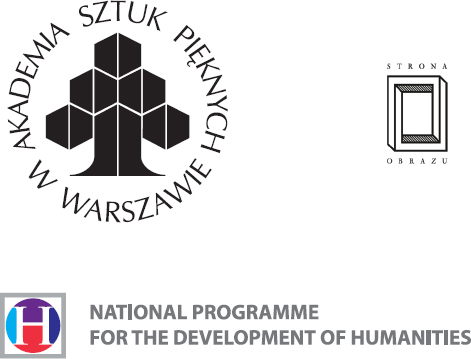
TABLE OF CONTENTS
INTRODUCTION EVERYTHING IS CENSORSHIP!
by Jakub Dbrowski
E verything is censorship! In a commercial aired on Polish TV of a drug that supports proper functioning of the liver and its detoxification, the serious voice of a popular actress declares that if you censored of all the items on the menu thats bad for our liver, life would lose its flavour. Simultaneously, we can see on the screen how Polish culinary specialties magically disappear from the table laden with food (because they are too heavy), and white plates with the red inscription censorship appear over the emptied plates. Of course, not for long, as the wonderful remedy advertised obliterates the liver ban.
How did the specialist term for preventive control of information dissemination at the state level become associated with almost every no of our life? The answer to this question is not obvious. It is possible that the most important thing here is the feeling that we are not allowed to do something, to express ourselves in a certain way. We focus on the experience of the ban and then identify it with the concept of censorship. We do not ponder on the sources, justifications and nature of the phenomenon, our identification is made automatically on the principle of simple homeopathy. But why is this happening? Maybe because various forms of expression are an indispensable part of human nature. Subconsciously, we feel resistance to any attempt to limit something that is not only a cultural need, but as in the case of food, even a physiological need that permeates every moment of our lives on different planes. Are we not our own permanent interlocutors? At the same time, dwelling on the justification and legitimacy of a ban is a difficult task - it engages deeply held, irreducible beliefs and emotions associated with them, and despite intellectual effort, it usually ends up getting tangled up in aporias. When someone commits a burglary or a murder, the case seems simple the act can be proved with relative ease, and the personal injury done is obvious; whereas, when someone expresses something in a symbolic manner, we fall into a net of doubt arising from linguistic ambiguity, individual sensitivity, our cherished values, the relations between good taste and real damage, etc. These problems escalate when the statement is of an artistic nature, especially when it comes to weighing the interests, where on the scale we have freedom of artistic expression and freedom to enjoy the products of culture on the one side, and protection of values violated by the work on the other side. In Western tradition, art is a sacralised sphere that enjoys special privileges. Should anyone interfere in this uncanny world? In a conversation with a work of art, something more is often perceived - something that the artist was not aware of when creating the work, and that which the recipient cannot fully grasp. Thus, it is difficult to say what values were violated, to what extent, and if at all. The matter is further complicated by the fact that the reception of art is historically changeable - how many works considered today as the indisputable canon and top achievements of our civilization were threatened with censorship yesterday? How can we pass judgments beyond reasonable doubt in such circumstances?
The phenomenon of broadening the meaning of the word censorship is observed not only in popular culture; but also in non-legal scholarly discourse, all limitations of the freedom of expression, or their attempts, even those that result from legal limiting clauses characteristic of liberal democracies, are usually associated with censorship. But associating the concept of censorship with any prohibitions imposed by substantially perceived power, which in this way interferes with the continuum of our life free by assumption is only one aspect of the phenomenon. The other is the question of whether the discursive sphere is shaped only through an official ban? What if life, our identity and communication possibilities (and therefore the whole sense of the continuum) are not free at all, if they immanently and unconditionally depend on the rules of the game (censorship), which have no substantial source and exist everywhere and always?
In democratic states, there is not such a harsh and formalized control of the information flow as in totalitarian or authoritarian states, but in both cases there are countless clusters of interests and power relations that are part of complex economic, political, ideological, cultural systems or social consensus. Of course, in the art world their existence is also ubiquitous. We will not get financing for our project if we do not meet the ideological expectations of a public sector sponsor or the commercial criteria of a private The introduction of such a context means blunting the traditionally sharp division that occurs in the discourse on censorship into the good ones who are the protectors of freedom and diversity and the bad ones who want to limit this freedom and diversity, and transferring deliberations to a different plane, or planes - to be more exact.
Next pageFont size:
Interval:
Bookmark:
Similar books «Censorship in Polish art after 1989: Art, Law, Politics»
Look at similar books to Censorship in Polish art after 1989: Art, Law, Politics. We have selected literature similar in name and meaning in the hope of providing readers with more options to find new, interesting, not yet read works.
Discussion, reviews of the book Censorship in Polish art after 1989: Art, Law, Politics and just readers' own opinions. Leave your comments, write what you think about the work, its meaning or the main characters. Specify what exactly you liked and what you didn't like, and why you think so.

